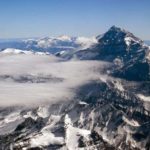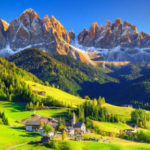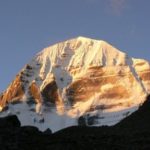Interesting facts about the Himalayas
 The most powerful mountain range on Earth, the Himalayas, is an amazingly interesting, beautiful and yet dangerous place. Yes, millions of people live here, but they know about the dangers lurking here – avalanches, treacherous mountain crevices, powerful earthquakes … However, guests still come here from all corners of the globe, because here.
The most powerful mountain range on Earth, the Himalayas, is an amazingly interesting, beautiful and yet dangerous place. Yes, millions of people live here, but they know about the dangers lurking here – avalanches, treacherous mountain crevices, powerful earthquakes … However, guests still come here from all corners of the globe, because here.
The total area occupied by the Himalayan mountain range exceeds one million square kilometers.
Many parts of the Himalayas have not been explored so far.
Locals, Sherpas, feel great at an altitude of 4-5 km above sea level, at half the normal pressure. They live mainly on the territory of modern Nepal.
The basis of the local cuisine is rice, but in the Himalayas they grow mainly the variety that is sold in a shop called red. Only he is able to grow at that height.
Ten Himalayan peaks have a height of more than 8 km above sea level.
The Himalayan mountain range is located in 5 countries at once.
Planes do not fly over them, but some birds are very even. Ordinary wild geese sometimes fly over the Himalayan mountains.
The average height of the Himalayas reaches 6 km.
In the harsh Himalayan climate, familiar vegetables and fruits grow very reluctantly. But locals grow rice, potatoes and some vegetables.
The name of the Himalayas comes from the word “Himalaya”, which in the ancient Sanskrit language means “snow kingdom”.
In total, there are 109 peaks in the Himalayas.
The kingdom of eternal snow in the Himalayan mountains begins at an altitude of 4.5 to 6 km above sea level, depending on the slope.
At its widest point, the width of this mountain range reaches 13,000 km.
It is in the Himalayas that the highest and most dangerous peaks of the world are located. This is Everest and Annapurna, which is the 10th highest among all the peaks.
The famous Russian artist and scientist Nicholas Roerich spent the last years of his life here, in the Himalayas. His manor in these parts has been preserved to this day.
Ten of the fourteen eight-thousand peaks, that is, mountain peaks more than 8 km in height, are located precisely in the Himalayas.
Here, at an altitude of more than 4 km, lies the source of the Ganges, the sacred river for a billion Hindus.
Some glaciers in the Himalayas are moving at a speed of up to 2.5-3 meters per day.
Once upon a time, the Himalayas were part of the ocean floor, but the displacement of tectonic plates turned them into the highest mountain range of the world.
Many of the Himalayan peaks still have not stepped human foot.



























